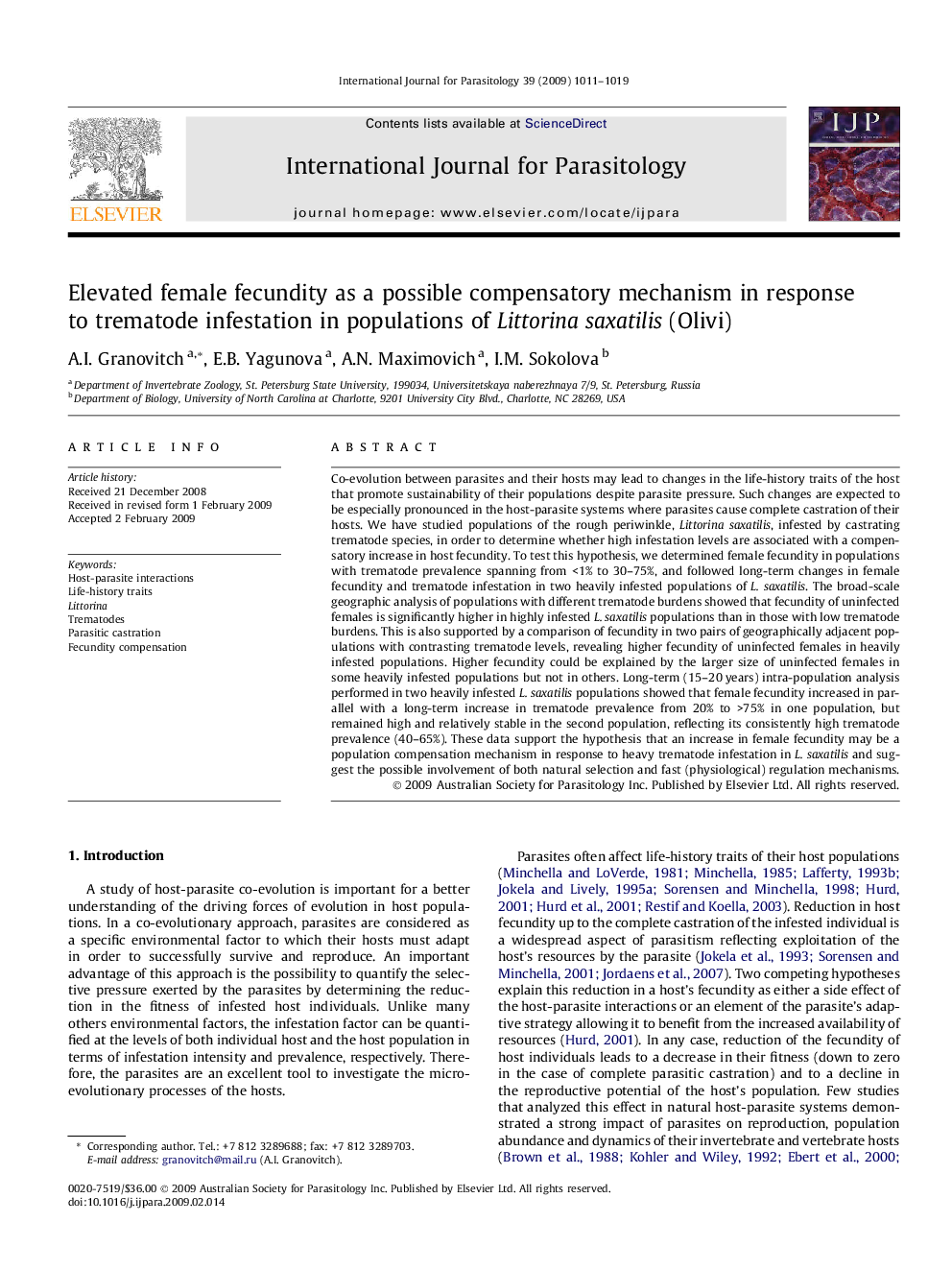| کد مقاله | کد نشریه | سال انتشار | مقاله انگلیسی | نسخه تمام متن |
|---|---|---|---|---|
| 2436519 | 1107320 | 2009 | 9 صفحه PDF | دانلود رایگان |

Co-evolution between parasites and their hosts may lead to changes in the life-history traits of the host that promote sustainability of their populations despite parasite pressure. Such changes are expected to be especially pronounced in the host-parasite systems where parasites cause complete castration of their hosts. We have studied populations of the rough periwinkle, Littorina saxatilis, infested by castrating trematode species, in order to determine whether high infestation levels are associated with a compensatory increase in host fecundity. To test this hypothesis, we determined female fecundity in populations with trematode prevalence spanning from <1% to 30–75%, and followed long-term changes in female fecundity and trematode infestation in two heavily infested populations of L. saxatilis. The broad-scale geographic analysis of populations with different trematode burdens showed that fecundity of uninfected females is significantly higher in highly infested L. saxatilis populations than in those with low trematode burdens. This is also supported by a comparison of fecundity in two pairs of geographically adjacent populations with contrasting trematode levels, revealing higher fecundity of uninfected females in heavily infested populations. Higher fecundity could be explained by the larger size of uninfected females in some heavily infested populations but not in others. Long-term (15–20 years) intra-population analysis performed in two heavily infested L. saxatilis populations showed that female fecundity increased in parallel with a long-term increase in trematode prevalence from 20% to >75% in one population, but remained high and relatively stable in the second population, reflecting its consistently high trematode prevalence (40–65%). These data support the hypothesis that an increase in female fecundity may be a population compensation mechanism in response to heavy trematode infestation in L. saxatilis and suggest the possible involvement of both natural selection and fast (physiological) regulation mechanisms.
Journal: International Journal for Parasitology - Volume 39, Issue 9, 15 July 2009, Pages 1011–1019